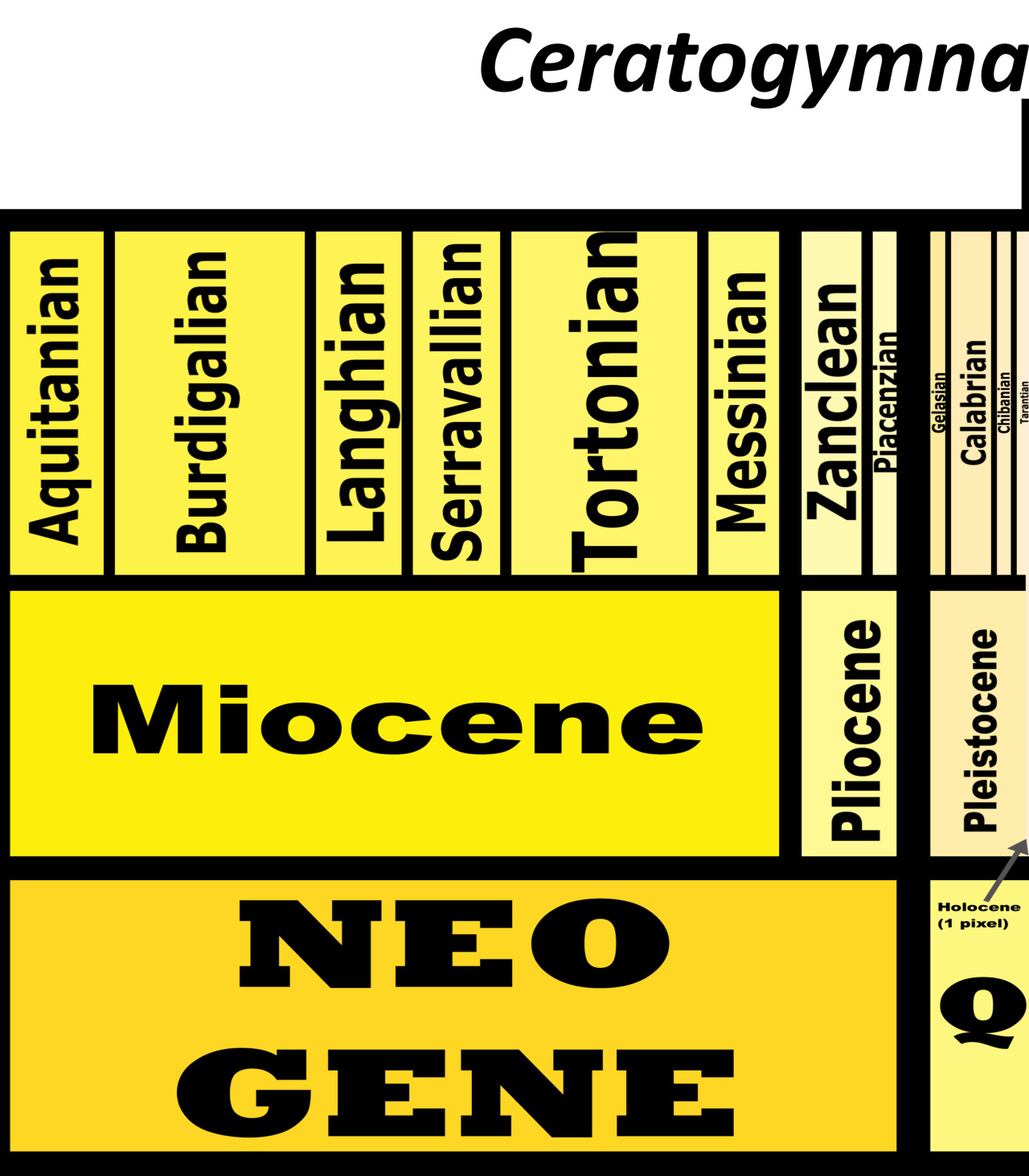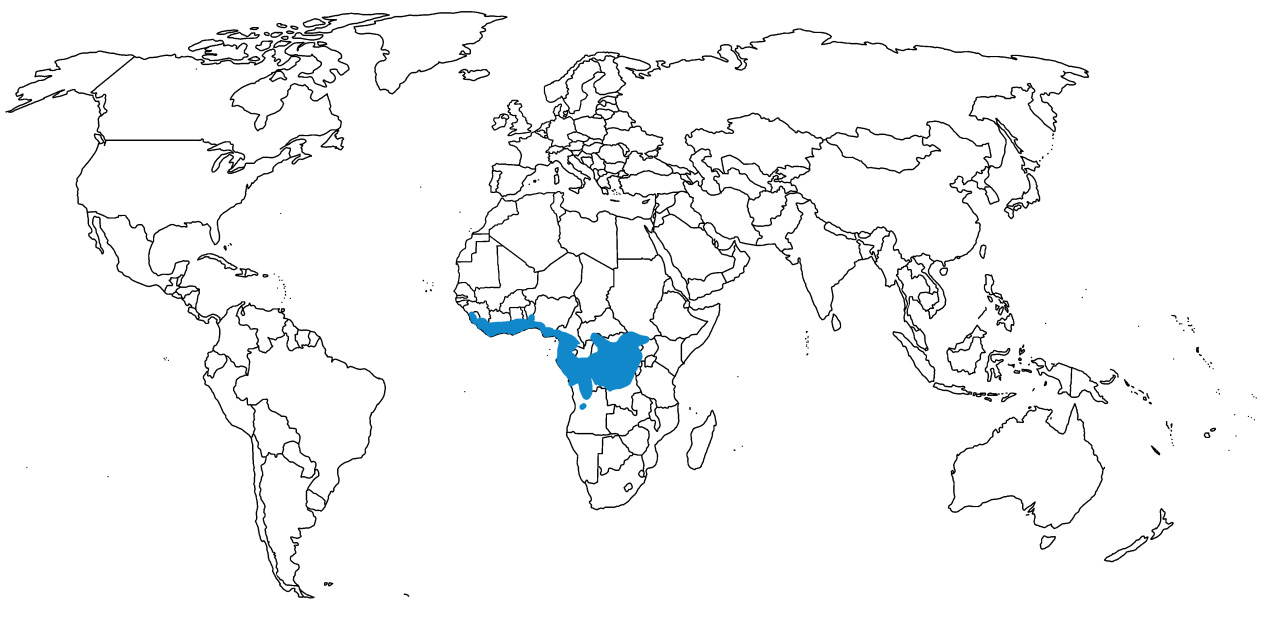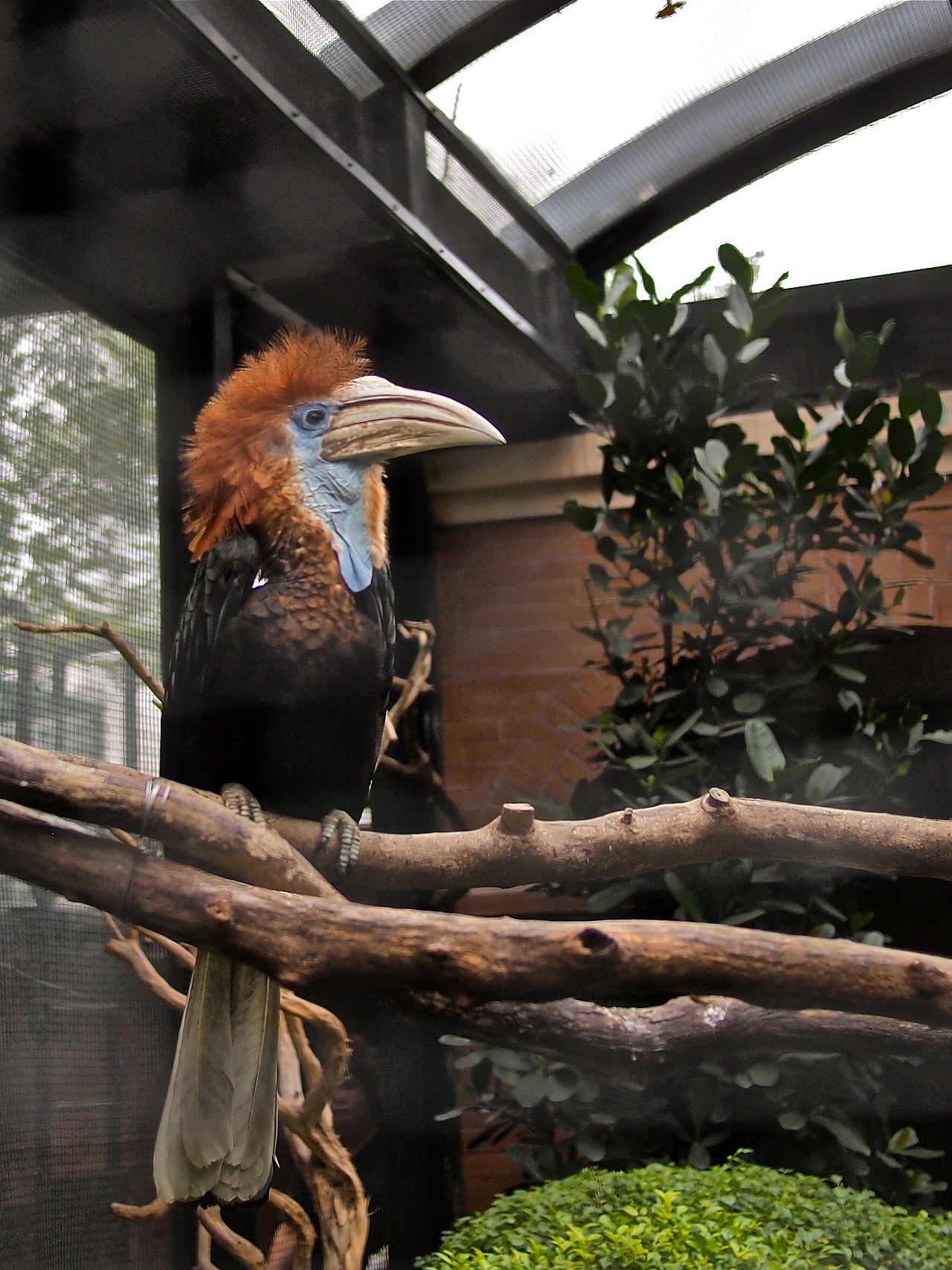Black Casqued Hornbill by Daderot, in the Public Domain
Etymology: Naked Horn
First Described By: Bonaparte, 1854
Classification: Dinosauromorpha, Dinosauriformes, Dracohors, Dinosauria, Saurischia, Eusaurischia, Theropoda, Neotheropoda, Averostra, Tetanurae, Orionides, Avetheropoda, Coelurosauria, Tyrannoraptora, Maniraptoromorpha, Maniraptoriformes, Maniraptora, Pennaraptora, Paraves, Eumaniraptora, Averaptora, Avialae, Euavialae, Avebrevicauda, Pygostaylia, Ornithothoraces, Euornithes, Ornithuromorpha, Ornithurae, Neornithes, Neognathae, Neoaves, Inopinaves, Telluraves, Afroaves, Coraciimorphae, Cavitaves, Eucavitaves, Picocoraciae, Bucerotiformes, Buceroti, Bucerotidae
Referred Species: C. atrata (Black-Casqued Hornbill), C. elata (Yellow-Casqued Hornbill)
Status: Extant, Vulnerable – Least Concern
Time and Place: Within the last 10,000 years, in the Holocene of the Quaternary


These Hornbills live along the western coast of Africa

Physical Description: These Hornbills are distinctive for their very large casques on their bills, which are especially distinctive and large in the males. The males have casques that go all the way to the end of the beak, hanging off a little, while the females have smaller casques. The males are generally black in color, with fluffy black feathers coming off of the backs of their heads and going down to their necks. The females, meanwhile, are ginger – same feather patterning, but reddish orange instead of black. They have very large bills, and black bodies; with long black tails coming off of their bodies. Both species have blue patches on their throats as well. They range from 60 to 70 centimeters in size, about the length of a pillow.
Diet: These casqued hornbills primarily eat fruit off of the ground, though they supplement their diets with small animals like insects and crabs. They also drink more water than other hornbills.
Behavior: The casqued hornbills will mainly eat food in the forage canopy, as high as 50 meters off of the ground, though they will go down to the ground to pick up fruit and insects, as well as in flight. They’ll often forage together, in small groups, and often forage better than other herbivores in the trees – getting fruit that other birds and monkeys cannot reach. They will call to each other with loud, nasally barks and braying, with varying in tempo and pitch. The males make louder, deeper calls than the females. They do make weird laughing sounds when alarmed.

Yellow Casqued Hornbill by Denise Chan, CC BY-SA 2.0
These birds probably breed throughout the year, though little is known of their breeding season – they seem to breed at any time of the year, though it depends on location somewhat. They probably initiate breeding seasons based on the availability of fruit, which is driven by the females – the males conduct mating displays most years. The females and juveniles work together to build nests, where one to two white eggs are laid. Usually these nests are placed in cavities in tall trees. Both sexes care for the nest and then the young, but usually one one of the eggs reaches fledging age. Nesting success is directly tied to fruit availability. They do not really leave their home range, usually living in large families and flocks of up to fifty birds; and can live up to twenty years.
Ecosystem: These birds live in lowland jungle and tropical wet forests, mainly in primary and secondary growth. They do often roam into plantations as well. They are preyed upon by Crowned Hawk-Eagles and leopards – and seem to work together with Diana Monkeys to avoid predators.
Other: While the Black-Casqued Hornbill is not endangered, being quite common at many locations, the Yellow-Casqued Hornbill is vulnerable to extinction, showing population decline namely due to forest destruction. Both species are at risk due to their larger size.
Species Differences: These species mainly differ based on the colors of their necks and bills. The Yellow-Casqued Hornbill has a yellow casque, while the Black-Casqued Hornbill has a black casque. The Yellow-Casqued Hornbill also has a white neck, with brown spots across it. The Black-Casqued Hornbill just has a completely black neck.
~ By Meig Dickson
Sources
Jobling, J. A. 2010. The Helm Dictionary of Scientific Bird Names. Christopher Helm Publishing, A&C Black Publishers Ltd, London.
Kemp, A.C. & Kirwan, G.M. (2019). Black-casqued Hornbill (Ceratogymna atrata). In: del Hoyo, J., Elliott, A., Sargatal, J., Christie, D.A. & de Juana, E. (eds.). Handbook of the Birds of the World Alive. Lynx Edicions, Barcelona.
Kemp, A.C. & Boesman, P. (2019). Yellow-casqued Hornbill (Ceratogymna elata). In: del Hoyo, J., Elliott, A., Sargatal, J., Christie, D.A. & de Juana, E. (eds.). Handbook of the Birds of the World Alive. Lynx Edicions, Barcelona.

